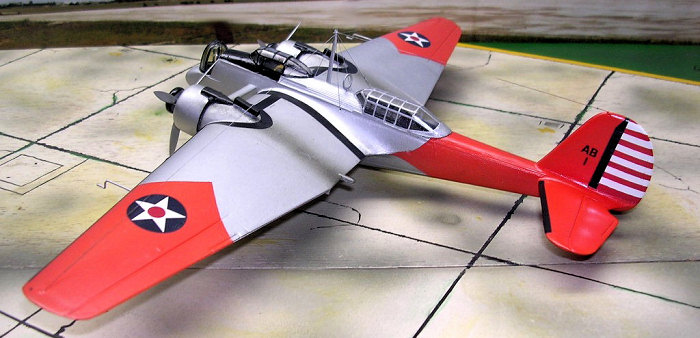
Williams Bros 1/72 Martin B-10B
| KIT: | Williams Bros 1/72 Martin B-10B |
| KIT #: | 72210 |
| PRICE: | 5 Maltese Lire |
| DECALS: | See article |
| REVIEWER: | Carmel J. Attard |
| NOTES: | Modified into a transport |

| HISTORY |
The Martin B-10 bomber was a cantilever mid-wing monoplane
with a retractable undercarriage and first production warplane to be fitted with
radio equipment. The prototype XB-907A was acquired by the US Army and given the
designation XB-10. Production aircraft began to enter service in June 1934, and
in addition to conventional duties in the bomber role a number was operated for
a time on large twin floats for coastal patrol. The type remained in service
until late 1930s. The B-10B was the major production
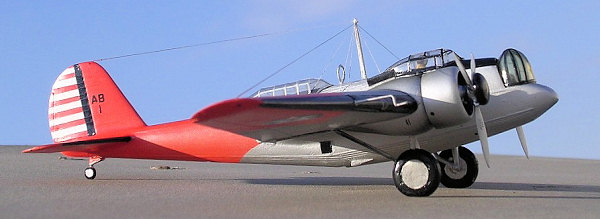 version as the UB-10 with a
difference of having more powerful R-1820-33 engines, 103 of which were built.
This had sliding canopies for the pilot and radio operator/gunner who could also
fly the B-10 using rudimentary controls. It carried a crew of 4 who flew in
comfort, shielded from elements. Deliveries of the B-10Bs kept the plant going
for the first half of 1936 with the last bomber being delivered by mid summer.
Foreign sales of the bomber saved the Martin Company from financial ruin. These
orders included 9 for China, 3 for Siam, 20 for Turkey, 34 to Argentina, 1 to
USSR and 3 to the Netherlands West Indies who later also received additional 99
aircraft of the type.
version as the UB-10 with a
difference of having more powerful R-1820-33 engines, 103 of which were built.
This had sliding canopies for the pilot and radio operator/gunner who could also
fly the B-10 using rudimentary controls. It carried a crew of 4 who flew in
comfort, shielded from elements. Deliveries of the B-10Bs kept the plant going
for the first half of 1936 with the last bomber being delivered by mid summer.
Foreign sales of the bomber saved the Martin Company from financial ruin. These
orders included 9 for China, 3 for Siam, 20 for Turkey, 34 to Argentina, 1 to
USSR and 3 to the Netherlands West Indies who later also received additional 99
aircraft of the type.
Perhaps a feat for which the B-10B remains known was that of
summer 1934 when Lt. Col Henry H. ‘Hap’ Arnold was ordered to Wright Field in
Dayton, Ohio to organise a flight of bombers to Alaska. The all metal B-10 were
to be used as it was the first 200 mph bomber with a range of 900 miles. The
flight path would take the bombers from Dayton, Ohio, to Washington, D.C. These
would then travel to Minneapolis, Minnesota, into Canada across Alberta to
Prince George, than to Fairbanks, Alaska. The mission would include aerial
photography of Alaska to map airways in a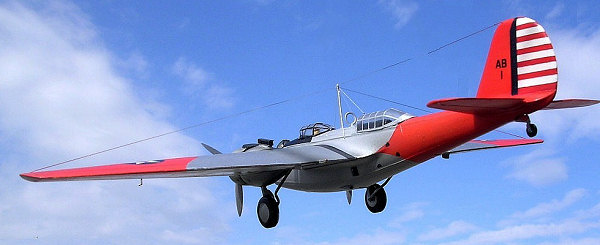 nd out of Alaska and to various ports
of entry to Alaska from the Soviet Union. The return flight would send the
bombers south from Juneau, Alaska, to Seattle, Washington, then on to Washington
D.C. The flight would include 10 bombers with 14 officers and six enlisted men.
After a month of preparation, the B-10s took off for Washington on 18th
July 1934. The mission was without precedent but was not unusually tough. The
B-10 averaged 820 miles a day. Placing politics aside, the trip had proven the
extensive range and strategic application of the Army’s bombers. Lt. Col Henry H
Arnold was awarded the Distinguished Flying Cross for leading the flight to
display the range of strategic air power and was named assistant to the Chief of
Air Corps in 1935. When Oscar Westover was killed in a plane crash Arnold
succeeded him as chief. In this position he was instrumental in laying the
groundwork for the
nd out of Alaska and to various ports
of entry to Alaska from the Soviet Union. The return flight would send the
bombers south from Juneau, Alaska, to Seattle, Washington, then on to Washington
D.C. The flight would include 10 bombers with 14 officers and six enlisted men.
After a month of preparation, the B-10s took off for Washington on 18th
July 1934. The mission was without precedent but was not unusually tough. The
B-10 averaged 820 miles a day. Placing politics aside, the trip had proven the
extensive range and strategic application of the Army’s bombers. Lt. Col Henry H
Arnold was awarded the Distinguished Flying Cross for leading the flight to
display the range of strategic air power and was named assistant to the Chief of
Air Corps in 1935. When Oscar Westover was killed in a plane crash Arnold
succeeded him as chief. In this position he was instrumental in laying the
groundwork for the  massive
industrial expansion the war would require.
massive
industrial expansion the war would require.
The B-10B was a versatile aircraft and a number were also employed to transport people and supplies, for making surveys and for search and rescue work at the remote Alaskan span and these wore different livery from the blue and yellow bomber colours so common in those days on B-10s. The few B-10 employed on these flights were finished in silver with large areas to the wing tips and rear fuselage painted in high visibility red/orange. This conspicuous finish would make them easily detected in the event that a flight comes to grief in the snow mountainous wilderness. This colour scheme proved effective and was to be a standard livery, with slight modifications, to follow-up missions conducted in the Arctic Circle by the Neptune, Beaver, Otter, S-55, R4D, C-117, Constellation, C-124, C-123 and C-130, all of which wore the conspicuous international orange and silver colours throughout the 1950s and until late into the 60s.
| THE KIT |
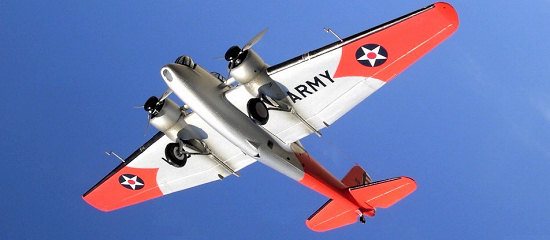 The kit used in this review was acquired in an already built
state, it was long out of stock locally and was in a condition that could be
salvaged and rebuilt with a few changes. The kit itself as found in the box has
already been reviewed in detail in previous issues and it is not the intention
to repeat. The kit had rubber tyres, these were cracked and needed to be
restored by first weld the cracked tyres with superglue and faired smooth with
filler and sanding. The undercarriage was fitted the wrong way round and this
was rectified. The remainder of the kit was in a good and reasonable condition
although already painted having a blue fuselage and yellow wings. It was a
delicate process to strip the paint as best I could without hindering the
corrugate surface. The side windows were removed but most of the interior was in
place and required a little alteration to bring it right.
The kit used in this review was acquired in an already built
state, it was long out of stock locally and was in a condition that could be
salvaged and rebuilt with a few changes. The kit itself as found in the box has
already been reviewed in detail in previous issues and it is not the intention
to repeat. The kit had rubber tyres, these were cracked and needed to be
restored by first weld the cracked tyres with superglue and faired smooth with
filler and sanding. The undercarriage was fitted the wrong way round and this
was rectified. The remainder of the kit was in a good and reasonable condition
although already painted having a blue fuselage and yellow wings. It was a
delicate process to strip the paint as best I could without hindering the
corrugate surface. The side windows were removed but most of the interior was in
place and required a little alteration to bring it right.
| CONSTRUCTION |
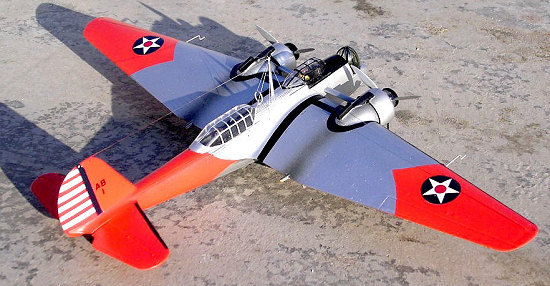 The cockpit canopies were first removed and placed aside,
these consisted of the nose turret dome and two crew canopies. This apparently
was one of the early limited run kits and considering that it was a kit of this
class I figured it was easy to build straight from the box, more than current
types by MPM and Valom etc. I had no decals to replace and best I could do was
to retrace the walkways on a tracing paper and look for some other livery. I
also needed to reposition the control columns which were fitted slightly
inclined and therefore needed correction. The kit still needed careful trimming
around the front turret opening and the two cockpit areas. The interior was
already painted silver and the crew seats in tan colour. I decided to add a crew
figure in order to fill the forward pilot compartment. Seat straps were added to
the figure after this was painted in costume colours of the time. I also
replaced the central fuselage mast with a tiny metal hollow pipe. This had an
eye of a needle inserted at the top end and flattened, filed and cut to correct
length as the original mast. Referring to scale plans I added the bracing wires
and wireless using smoke coloured invisible thread.
The cockpit canopies were first removed and placed aside,
these consisted of the nose turret dome and two crew canopies. This apparently
was one of the early limited run kits and considering that it was a kit of this
class I figured it was easy to build straight from the box, more than current
types by MPM and Valom etc. I had no decals to replace and best I could do was
to retrace the walkways on a tracing paper and look for some other livery. I
also needed to reposition the control columns which were fitted slightly
inclined and therefore needed correction. The kit still needed careful trimming
around the front turret opening and the two cockpit areas. The interior was
already painted silver and the crew seats in tan colour. I decided to add a crew
figure in order to fill the forward pilot compartment. Seat straps were added to
the figure after this was painted in costume colours of the time. I also
replaced the central fuselage mast with a tiny metal hollow pipe. This had an
eye of a needle inserted at the top end and flattened, filed and cut to correct
length as the original mast. Referring to scale plans I added the bracing wires
and wireless using smoke coloured invisible thread.
Back to the canopies, these were on the thick section and
having a yellowish transparency. I replaced these with a fine set of Falcon
Clear Vax canopies set No 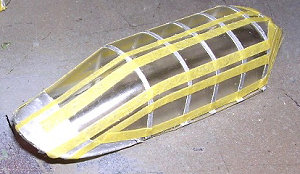 30. Unfortunately the front turret clear dome was not
included in the set and had no option but to reuse the old kit one. Prior to
cementing the canopies these were carefully masked and painted first silver then
the front canopy and nose turret ones had the frames painted black. I also
removed the bomb rack from the starboard wing in view that the B-10 was on a
totally different mission into one as a utility transport. In brief other
additional work included the making of the two pitot tubes out of bent metal
pins and fitting them to the correct place on the wing leading edges. Added
winglets to root leading edge area as these were missing from my kit and the
B-10B had these fitted. These were made from Contrail struts of correct chord
width and cut to right length and fitted in place. I also added landing lights
made from thick Perspex pieces which were inserted oversize at leading edge and
then filed smooth to blend. To each wing intake I added two hollowed out stretch
sprue which was fitted inside the opening as this seemed to be missing from the
issued kit. These intake pieces were allowed to extend a small lip to exceed
beyond the leading edge. Then sand the intakes back to leading edge of wings.
Two round pieces reshaped from spare wheels were to form the prop spinner guards
as depicted in photos which I had at my disposal of the version I was building.
Apparently this was to protect the aircraft engines as it was on snow/ bush
terrain missions unless these were heaters of some sort. For the apertures of
the two side windows and one below fuselage I used Humbrol ClearFix medium.
30. Unfortunately the front turret clear dome was not
included in the set and had no option but to reuse the old kit one. Prior to
cementing the canopies these were carefully masked and painted first silver then
the front canopy and nose turret ones had the frames painted black. I also
removed the bomb rack from the starboard wing in view that the B-10 was on a
totally different mission into one as a utility transport. In brief other
additional work included the making of the two pitot tubes out of bent metal
pins and fitting them to the correct place on the wing leading edges. Added
winglets to root leading edge area as these were missing from my kit and the
B-10B had these fitted. These were made from Contrail struts of correct chord
width and cut to right length and fitted in place. I also added landing lights
made from thick Perspex pieces which were inserted oversize at leading edge and
then filed smooth to blend. To each wing intake I added two hollowed out stretch
sprue which was fitted inside the opening as this seemed to be missing from the
issued kit. These intake pieces were allowed to extend a small lip to exceed
beyond the leading edge. Then sand the intakes back to leading edge of wings.
Two round pieces reshaped from spare wheels were to form the prop spinner guards
as depicted in photos which I had at my disposal of the version I was building.
Apparently this was to protect the aircraft engines as it was on snow/ bush
terrain missions unless these were heaters of some sort. For the apertures of
the two side windows and one below fuselage I used Humbrol ClearFix medium.
| COLORS & MARKINGS |
With the canopies not yet in place but the cockpit areas
blanked I gave the model a coat of semi matt white paint. I then applied
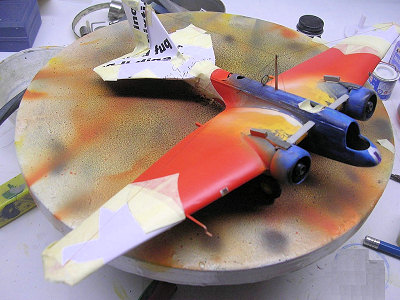 bright
orange using Compucolor Authentic FS 32246 CIS11. This I found to be too much on
the orange side and therefore I applied another coat of Hales Pactra X-13
Insignia Orange with fine sanding in between which certainly was the perfect
shade of red/orange I had in mind. I highly recommend this latter paint when
building aircraft with arctic orange areas as it is sufficiently bright yet not
dayglo type. The areas were then masked carefully using reference photos at my
disposal. The model was then given an airbrush coat of bright silver mixed with
a small amount of Revell gloss varnish. Any tiny faults that showed up were
attended to and again given the final silver mix coat.
bright
orange using Compucolor Authentic FS 32246 CIS11. This I found to be too much on
the orange side and therefore I applied another coat of Hales Pactra X-13
Insignia Orange with fine sanding in between which certainly was the perfect
shade of red/orange I had in mind. I highly recommend this latter paint when
building aircraft with arctic orange areas as it is sufficiently bright yet not
dayglo type. The areas were then masked carefully using reference photos at my
disposal. The model was then given an airbrush coat of bright silver mixed with
a small amount of Revell gloss varnish. Any tiny faults that showed up were
attended to and again given the final silver mix coat.
Leading edge boots were painted black as were also anti glare areas ahead of cockpits. The undercarriage was painted silver and the interior of wells was black. Canopies were now fixed in place using Humbrol ClearFix to keep them secure. The only weathering was the exhaust stains from the engine which was light airbrushing of a mix consisting of 75% matt Revell varnish and 25% Compucolor engine grey CA10 ANA 513. The leading edge boots and anti glare panels were in the end given a coat of matt varnish.
As for the markings, I applied walkways using black Xtradecal
strip, and the Insignia and US Army legend from Superscale decal sheet 72-001.
The registration lettering came from the spare decal box.
| CONCLUSIONS |
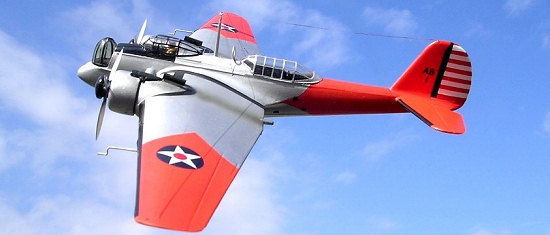 The B-10 was an early military bomber and building it in the
transport form with bright colourful markings suited for missions in Alaska and
the Arctic Region operations provided a complete change from the blue and yellow
finish one may be accustomed to. Maybe this was the earliest style of applying
high visibility orange to these aircraft for the purpose mentioned earlier. It
was a prelude to more refined standard arctic markings that were to appear on a
wide range of follow up aircraft that took part in Arctic expeditions in the
years that followed until late 60s.
The B-10 was an early military bomber and building it in the
transport form with bright colourful markings suited for missions in Alaska and
the Arctic Region operations provided a complete change from the blue and yellow
finish one may be accustomed to. Maybe this was the earliest style of applying
high visibility orange to these aircraft for the purpose mentioned earlier. It
was a prelude to more refined standard arctic markings that were to appear on a
wide range of follow up aircraft that took part in Arctic expeditions in the
years that followed until late 60s.
Note about photographing aircraft models. When photographing aircraft models in broad daylight I found that the colours come out brighter and more contrasting if ideally taken during the late afternoon sunlight than during the morning. But then maybe this applies to the Mediterranean areas in particular.
March 2008
If you would like your product reviewed fairly and quickly, please contact me or see other details in the Note to Contributors.